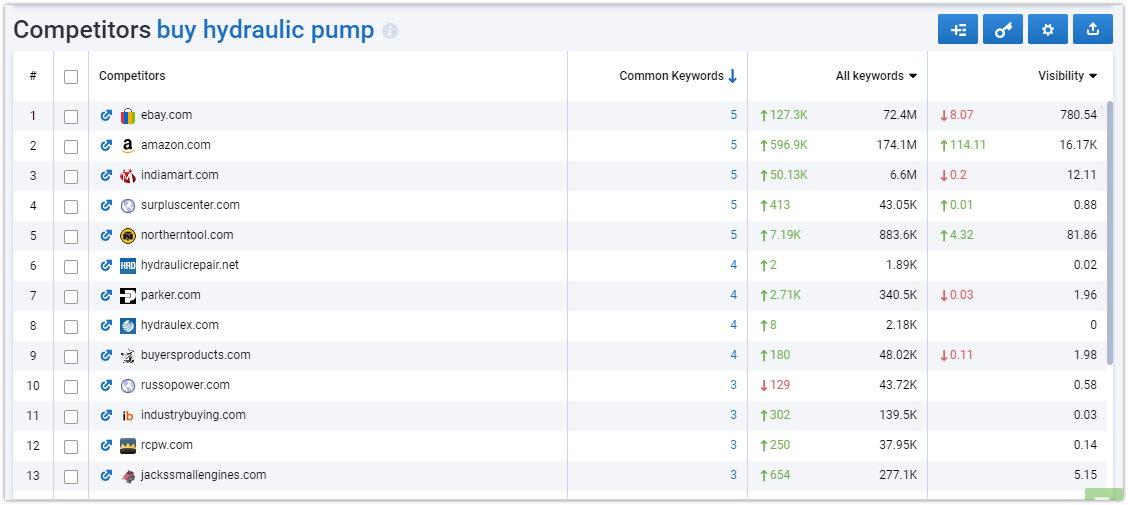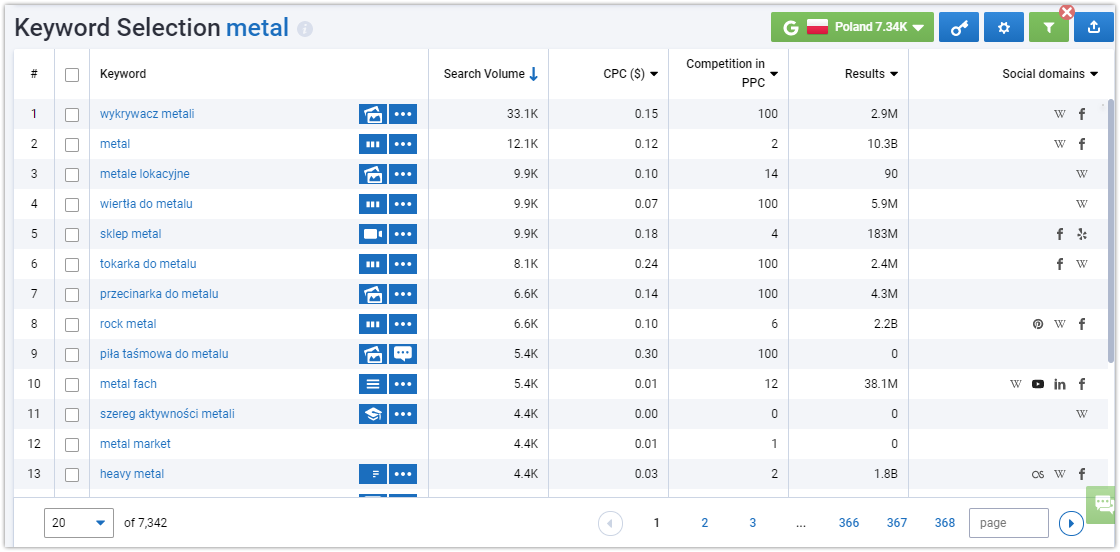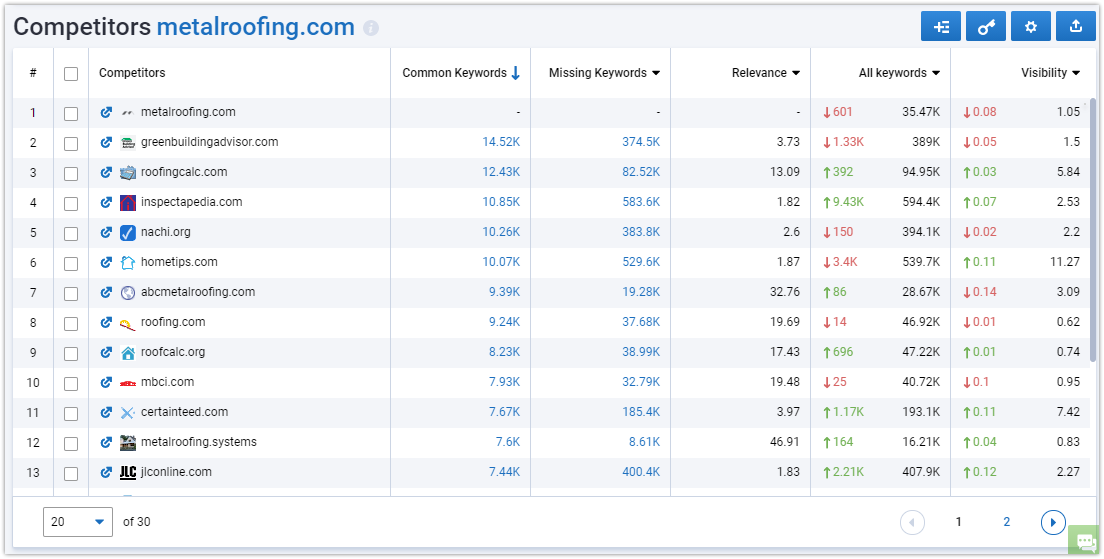Start Exploring Keyword Ideas
Use Serpstat to find the best keywords for your website
How To Evaluate The Profitability Of A Project And Form A Long-Term Strategy: Vintage Experience

This is quite a difficult task, but you will learn a lot of exciting things in today's article. You will also see how Serpstat can help automate many of the steps in strategy development.
2. Our tasks and challenges
3. Shaping our marketing strategy with Serpstat
3.1 Analyzing competitors for new products
3.2 Evaluating the profitability of online projects
3.3 Assessing SEO potential of existing projects to form a digital strategy
3.4 Searching for the most effective marketing tools
3.5 Tracking our competitors and promoting agency websites
4. Conclusion
For example, one of the big kebab chains contacted us. They knew how to calculate the opening of a new restaurant, the cost of renovations, etc. However, they didn't understand the volume of the market and activity on the Internet, how to estimate investments in digital, and the number of sales. We are actively using Serpstat and Similarweb for these purposes.
We learned how to do it quickly, and introduced this practice on the presale because to sell with a check above the market, you need to give the client more at the first meeting.
Often the client comes with his list of competitors, but it happens that the client's perception of them does not reflect the real picture.
The only way to assess a niche, in this case, is to operate with real data. Therefore, we always compare competing sites that the client has provided with the results in search engines.
With Serpstat, we collect keywords (and suggested and related semantics) to gather competitors from an end-user perspective. Previously, we did it all manually, which was very inconvenient, but in the last four years, we have been automating the process using Serpstat.
Based on this analysis, we develop ideas for bringing a new product to market and put forward theories. We check them on simple implementations and understand how it can work. Next, we are already creating an action plan for bringing the product to the market for 2-3 years.
For example, there are hundreds of competitors in the sale of hydraulic pumps, but they are not serious - with amateur sites and a weak context, although the cost of the product is high.

In terms of market size and product value, this is a good ratio. At the same time, we are developing a site where people really want to buy. Although we are web development, we are also responsible for the client's investment efficiency for 3 years after launch, and Serpstat helps us a lot.
For example, a client wants to enter the rolled metal market and needs to find out whether people buy cast iron pipes on the internet. To do this, we analyze competitors to understand how strong they are and what strategies they use:
We find the top 10 competitors in the niche and evaluate the queries for which they are ranked.
Although we are web developers, we must understand that the site itself does not work, so we give the client recommendations on what to do with the site further, where to direct resources (SEO, context, content marketing, etc.).
To determine market capacity, we use a potential traffic metric. This is how we determine how the market lives, its potential and traffic. We compare the indicators with a small adjustment for the real indicators of the projects to which we have access.
For example, there are 1.5 million spied keywords in the metal niche. If the client covers 15-20% of requests in the first year, we get traffic of about 200 thousand users per month. Considering the approximate conversion of visitors to buyers, we can calculate the number of orders for a client - 10 thousand per year. In turn, the client estimates this number of orders and the cost of maintaining a metal warehouse in comparison with eCommerce.
When you need to convince an offline client, we prepare an extensive study of existing players or neighboring niches. If the niche is not represented at all, we analyze the markets of countries where this area is more developed. Serpstat databases are very convenient for this. Let's say we are creating a website for the Polish market - we easily evaluate it without using additional services (VPN).

Thus, we help businesses that are not online to assess the return on investment in digital (website development, advertising, hiring employees), potential market capacity and player activity.
How To Discover A Competitor's Budget For Contextual Advertising: 3 Unusual Methods
Particular attention should be paid to keywords on pages 2-10 in the SERP since these phrases can quickly increase customer traffic. We would do such an assessment of the potential in any case, even if the client requested only the design. Based on such a quick analysis, we make recommendations and pass them on to the client.
There are niches where there are no strong competitors in SEO, or the leading players are not taking full advantage of them. This is how our clients become leaders with the minimal website development and promotion costs.
As a result, the client's business looked better on the Internet than offline, which led to a complete reorganization of the business into a digital model. Now the site has a VR application (you can hover over your empty plate and see a kebab, a CRM system, call tracking, end-to-end analytics, courier tracking.
The key success was that we tracked down that the niche is small, but low-competitive and formed the right strategy. For all questions that arise at the stage of creating a website or forming a strategy, we rely on data, and not using experience or intuition. This data helps to convince the client.
Zebo: How We Used Serpstat To Analyze Competitors And Check URLs
In our practice, there was an outsourcing company, that had a high competition level in contextual advertising. After calculating the required investments, it became clear that the client's budget, which was planned for PPC and the team's maintenance, will be exhausted in three months.
At the same time, competitors weren't doing content marketing. Therefore, we chose a content strategy already at the stage of website creation and deliberately approached the technical side - we placed the initially correct linking, wrote headings, formed meta tags. That is, already when creating the site, we understood that the client would invest in content marketing and we managed to stretch the budget for a year and at the same time increase the number of applications by 6 times.
Here we use reports for the analysis of competitors in PPC.

Vintage Agency has chosen this strategy: it is costly to promote by keyword "web design." We saw that we have a solid case on interior design, so we chose this niche and wrote several articles on interior design. We take the first place with this pool of low-frequency keywords.
Then we took the topic of restaurants and pumped the content according to the same principle. Next, we saw that no one wants to be # 1 for the "bad web design" keyword. And we decided - why not, and wrote several articles on this topic.
As a result, we took three topics, focused on them in content marketing, and now track positions with Serpstat. When we see that we have achieved certain results, we take the next topic and start working with it.
Speed up your search marketing growth with Serpstat!
Keyword and backlink opportunities, competitors' online strategy, daily rankings and SEO-related issues.
A pack of tools for reducing your time on SEO tasks.
Discover More SEO Tools
Website Audit
Website SEO analysis – gain detailed insights into your website's technical health
Batch Analysis of Competitors' Domains
DA Domain Checker – get valuable information about the competitors' domains
AI Content Tools
AI Content Marketing Tools – simplify and optimize the content creation process
Local SEO Tool
Our local SEO platform – optimize your website for maximum impact
Recommended posts
Cases, life hacks, researches, and useful articles
Don’t you have time to follow the news? No worries! Our editor will choose articles that will definitely help you with your work. Join our cozy community :)
By clicking the button, you agree to our privacy policy.


